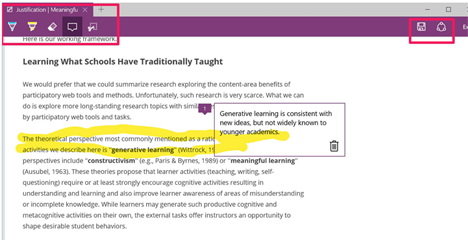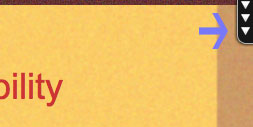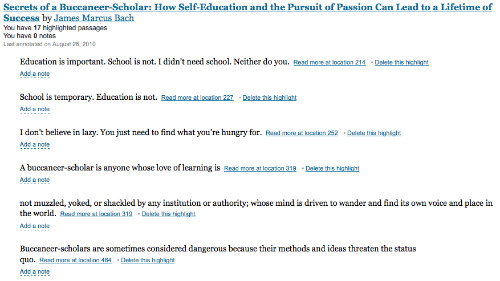I encountered a recent article on “Annotating the scholarly web” in Nature and the author was promoting an activity that has long interested me (click on the highlight tag attached to this post to see earlier posts with a similar theme). The article describes Hypothes.is which is open source software for pdf and web annotation and highlighting. This article would not be published by Nature because it describes this software. It was included because the idea is to use the sharing of highlights and annotations as a way for scholars to interact in the discussion of published work.
As I suggest above, social bookmarking/highlighting is not a new idea. What this venture has going for it that is unique is the effort to go beyond developing the tool and attempting to establish partnerships with publishers.
I investigated Hypothes.is a bit more and have a better understanding of how they see the “big picture”. In addition to attempting to gain the cooperation of partners, the group is also working toward the development of annotation standards. One of the problems at present is that the various methods for web highlighting operate in different ways and likely struggle to develop a sufficient following to continue. Working toward standards would allow those adopting the standards to use different tools to share.
Hypothes.is is also thinking beyond the development of tools for advanced scholars and presently offers suggestions for how students might use their resource.
Here is my take on how this works. I think of it as similar to tools I use to highlight pdfs I read (e.g., Skim ). It is like the software adds a layer over a page and allows a user to mark on this layer. The original is not actually altered. The software/online service saves the marked up layer separately. When shared (or just retrieved by the individual adding the highlights), the original and the extra layer are combined for viewing.
Highlighting and annotating (with the opportunity for replying to comments) goes beyond the addition of comments at the end of a document or post. It is much easier to understand the context of an embedded message.
Hypothes.is allows public, private, or defined group highlighting. I have added some highlights to a personal page so you can see what a marked-up page looks like.
![]()









You must be logged in to post a comment.